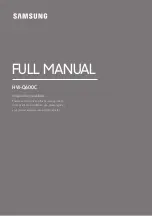
Manuale di Installazione e Manutenzione unità di recupero calore ad altissima efficienza -
Very high efficiency heat recovery unit
pag. 27
4 - COLLEGAMENTI ELETTRICI
4 - ELECTRIC CONNECTIONS
4.3 INSTALLAZIONE SENSORE CO
2
O SENSORE UMIDITÀ
• Aprire il sensore agendo sul dente in plastica inferiore (fig. 14).
• Fissare il sensore alla parete utilizzando 2 opportuni fisher con viti
attraverso le asole presenti nella sonda.
• Solo nel caso di sensore CO
2
è necessario alimentare il sensore
con tensione a 230Vac.
• Solo nel caso di sensore umidità RH sono presenti all’interno n°2
batterie AA 1,5V per la sua alimentazione.
• Non è necessario collegare alcun cavo tra sensore ed unità: il sen-
sore comunica con l’unità con segnali in radiofrequenza RF.
Asole di fissaggio -
Mounting holes
Morsetti per alimentazione
230Vac (solo per sensore CO
2
)
Screw terminal for 230Vac (only
for CO
2
sensor)
Passaggio cavi alimentazione
230Vac (solo per sensore CO
2
)
230Vac in for flush mount box
(only for CO
2
sensor)
Dente di apertura-chiusura a scatto
Opening - closing clamp
fig. 14
4.3 INSTALLATION CO
2
OR HUMIDITY SENSOR
• Open the sensor pushing the plastic bottom clamp (fig. 14).
• Fix the sensor to the wall by two appropriate fisher with screws
through the eyelets.
• Only in case a CO
2
sensor is present, it is necessary to supply a
230Vac voltage to the sensor.
• Only the RH sensor is powere by n°2 AA - 1,5V batteries.
• It is not necessary to connect any cable between sensor and unit:
the sensor sends out a signal via RF to the heat recovery unit
















































